Home | Front Page | Index | Blog | New | Contact | Site Map

Egypt
Israel
Turkey
Bulgaria
Romania
Ukraine
Poland
Prague
Britain
USA 2002
Travel Map
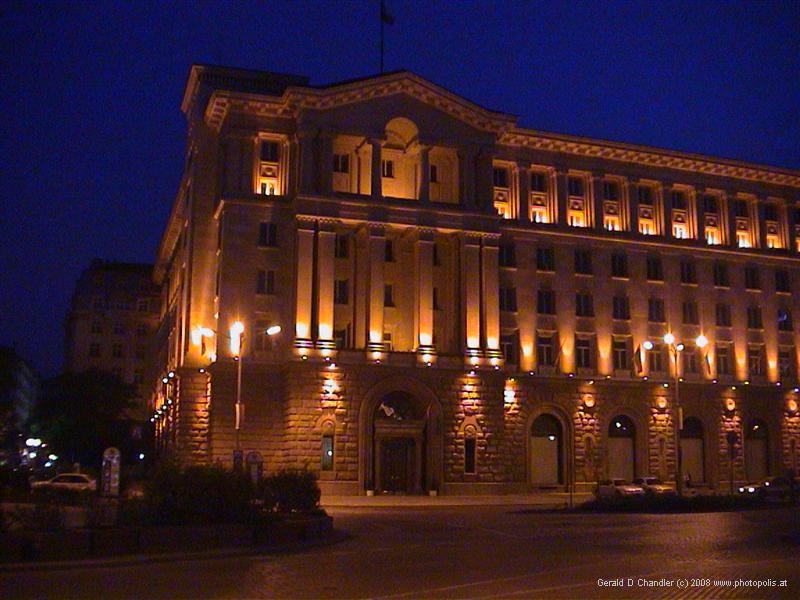
Government Building in Downtown Sofia |
We arrived in late, late afternoon of a summer day that was long; that
is around 6pm.
After we got settled we set out to look at the city.
We
just wandered around and got our bearings, being impressed by several of
the buildings.
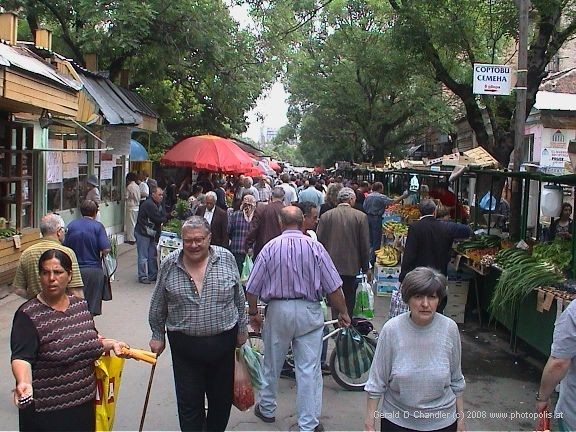
Open Market, Sofia |
After our first night in our little apartment we decided to walk the mile or so to the center of the city. Our indirect path took us to a market about a half mile away. It was crowded and, to us, filled with good things to eat. In fact, though, most Bulgarians would only shop here if they did not have a relative with a property outside the city. Those with access to country gardens seem to grow food there as a family and share both the food and the salary of the city worker.

Byzantine-style Building, Sofia |
We were pretty ignorant about Sofia before we came. While we knew the region, having been part of Greek, Roman, Byzantize, and Ottoman empires, must have a long history, we were unprepared to find buildings and remants of buildings from nearly two millennia ago. In fact, if we had toured during the communist era, rather than just passing through as we did in 1975 on the way to Iran, we would have seen fewer things. Since the fall of communism there has been an economic renewal and along with refurbishment of public buildings a mini-boom in private construction. People are far from rich but they are richer.
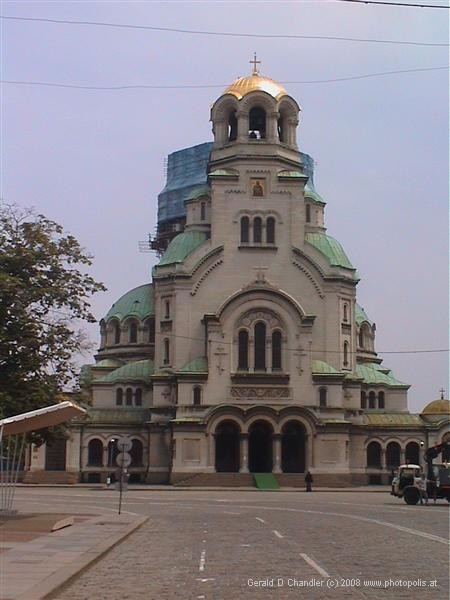
|
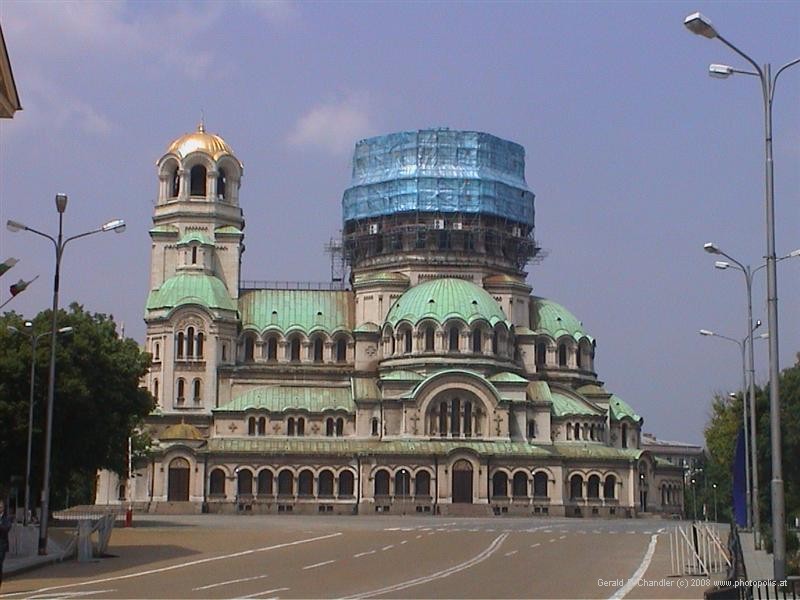
|
Alexander Nevsky Cathedral
As with all of the former Soviet Union satellites, there has also been a boom in religion in the country and lots of money has been spent on refurbishing and reconstructing the city's wealth of lovely churches. The city was given its current name, by the way, by the Ottoman invaders when they took the city in the 14th century and is named after the now ruined Church of Santa Sofia from the sixth century. The photograph is of the cathedral where John Paul II preached on his visit which ended just as we arrived. We were lucky enough to see the Pope the day we were there, although of course it was really just a glimpse as his pope-mobile passed along the street in front of one of the city's museums.

Cyril & Methodius Library |
This lovely neo-classical building houses the National Library, dedicated of course to Cyril and Methodius, the two monks who devised and developed the Cyrillic alphabet. For Jan, Sofia was her first extended exposure to the alphabet since she finished studying Russian at Bradford University in 1971, thirty years exactly before this visit. She found that she could understand some but not all Bulgarian because of her Russian knowledge.
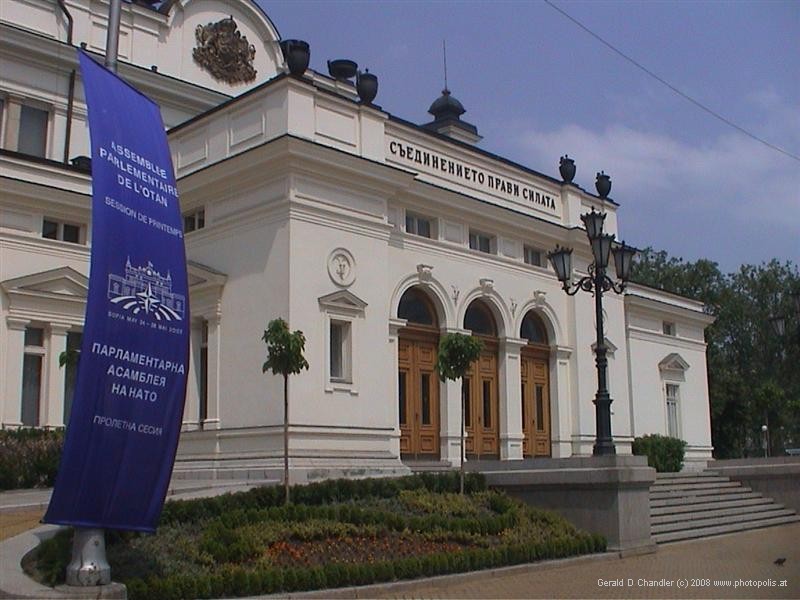
Site of NATO Meeting |
We are no longer sure what this building's real purpose is, but as you can see from the sign, it was used temporarily as the site of a NATO meeting. Jan thinks the building is part of the Justice ministry but can't be sure.

Ruins of Santa Sofia Church? |
We think that these are the ruins of the Church of Santa Sophia for which the city is named, but are no longer sure. The city is peppered with ruins some of them Roman.